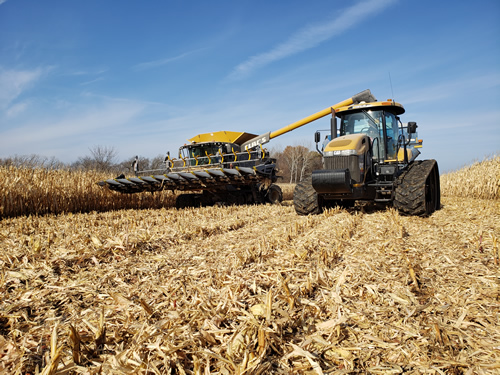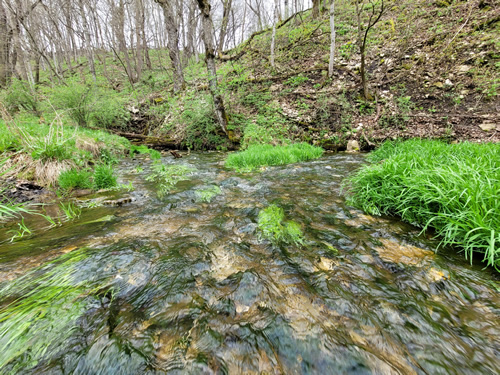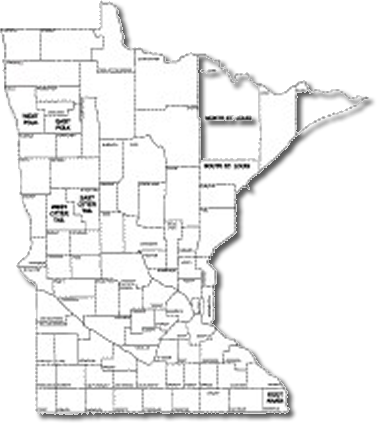The mission of the Fillmore Soil and Water Conservation District is to promote natural resource stewardship by providing educational, technical and financial assistance.
What is a SWCD
OVERVIEW
SWCDs are local units of government that manage and direct natural resource management programs at the local level. Districts work in both urban and rural settings, with landowners and with other units of government, to carry out a program for the conservation, use, and development of soil, water, and related resources.
One crucial niche districts fill is that of providing soil and water conservation services to owners of private lands. Privately owned lands make up 78 percent of the land surface in Minnesota. Managing these private lands, whether agriculture, forest, lakes, or urban, is key to Minnesota’s quality of life.
Minnesotans trust SWCDs to provide needed technology, funding and educational services because they are established in each community, governed by local leaders and focused on conservation of local soil and water resources


GOVERNANCE
Soil and Water Conservation Districts (SWCDs) are political subdivisions of the State. Supervisors serve four year staggered terms; generally, two or three of an SWCD’s five supervisors are up for election every two years. These positions have been local elected officials since SWCDs began to be formed in 1937. Since 1971 the offices have appeared on the November ballot as a nonpartisan office.
The elections have always been at-large within the district. In 1974 “supervisor nomination districts” were mandated for the purpose of ensuring some measure of geographic distribution of elected supervisors across each SWCD. The rationale for this is that the SWCD programs deal with land and water issues of geographic scope; thus, it was seen as good government to ensure geographic distribution of elected officials across the SWCD.
There are 88 SWCDs in Minnesota. There is at least one SWCD in each of the 87 counties, with the exception of the two most populated counties – Hennepin and Ramsey Counties, while a few of the larger counties have more than one:
- Otter Tail County – East Otter Tail SWCD and Wester Otter Tail SWCD;
- Polk County – East Polk SWCD and West Polk SWCD; and
- St. Louis County – North St. Louis SWCD and South St. Louis SWCD.
SWCD boards set overall policy and long-term objectives for their district and work with the SWCD staff to see that policies and plans are implemented. They are not paid a salary; however, they do receive compensation for attending meetings and are reimbursed for expenses.

AUTHORITY
Many of an SWCD authorities are established under Minnesota Statutes Chapter 103C-Soil and Water Conservation District Law.
See Minn. Stat. § 103C.331 – Powers of District Boards.
FUNDING
Soil and Water Conservation Districts are funded through a variety of sources. Many of their program administration dollars and funding for landowner projects are state dollars allocated by the legislature and passed-through the State Board of Water and Soil Resources (BWSR). General operating funds are obtained from BWSR, counties, fees for service and grants or partnership agreements with the federal government or other conservation organizations.
History of Fillmore SWCD
In the 1930s, a major driver for soil conservation was the amount of sediment entering the Mississippi River, clogging the river, making it unnavigable, and creating a constant maintenance problem as the locks and dams were being installed by the Corps of Engineers. Another concern was how soil erosion occurring in the southeastern Minnesota bluff country was affecting crop production. The Depression led to the formation of the Civilian Conservation Corps (CCC) as an opportunity to do soil conservation work and to put people to work. In Fillmore County, camps were located in Lanesboro, Spring Valley and Chatfield.
In 1934, there were three soil conservation demonstration projects in watershed in Fillmore County. During the six years that followed, farmers signed cooperative agreements with the Soil Conservation Service (SCS) for a planned approach to conservation work. This conservation work included practices such as contour strips, terraces, gully control structures, and forest and pasture management.
Building on the success of the previous six years, the East Fillmore Soil Conservation District formed in 1940 in the eastern half of the county. This brought more resources, such as technician, equipment and funding, for soil conservation work to this part of the county. Then in 1942, the West Fillmore District was established to bring those resources to the rest of the county.
We mark 1942 as the beginning of soil conservation for all of Fillmore County. In 1962, the two Districts came together to form the Fillmore Soil and Water Conservation District to match the county boundary which the Board of Supervisors felt could operate more efficiently.
